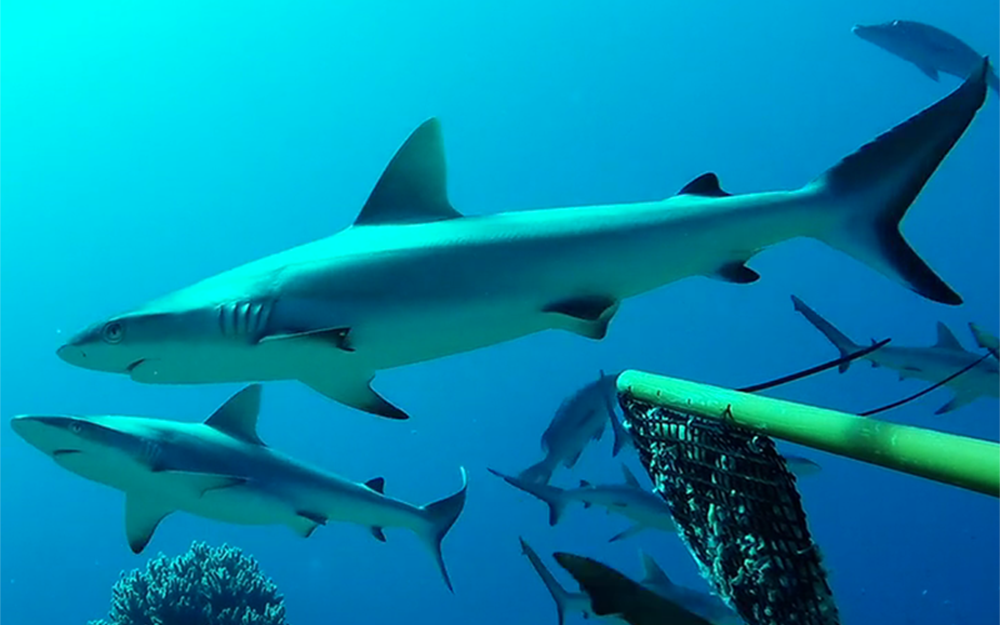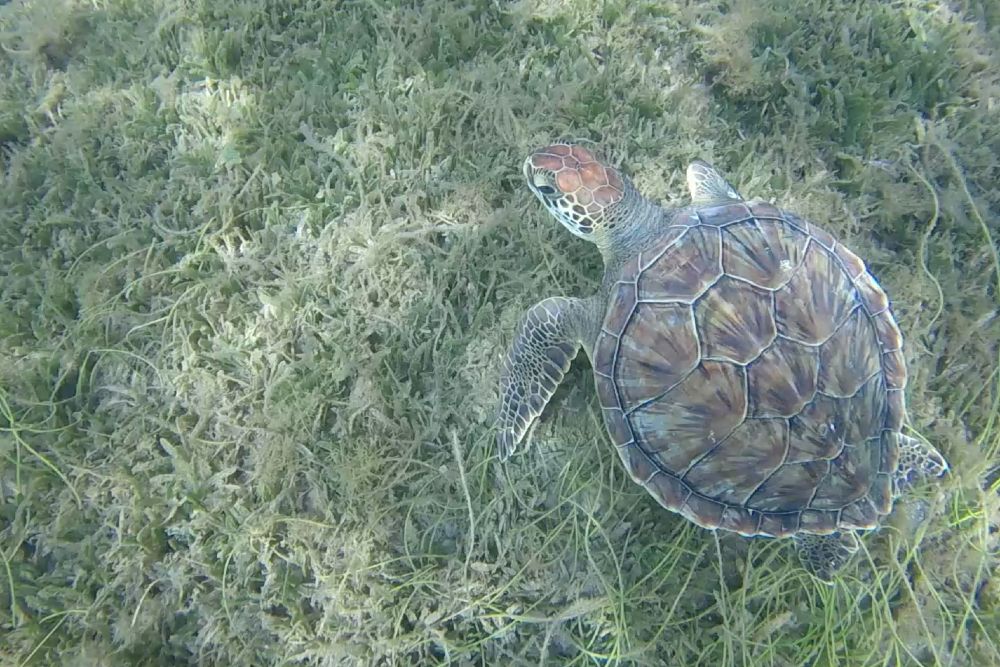Our involvement in ongoing research projects around the world contributes to our understanding of many species and ecosystems.
Global FinPrint
Dr. Heithaus is the co-lead Principal Investigator of the Global FinPrint project. A Paul G. Allen initiative, Global FinPrint unites collaborators around the world to fill a critical information gap about the diminishing numbers of shark and rays on coral reefs. The multi-institutional team conducts surveys of marine life on coral reefs using baited remote underwater videos (BRUVs). The research will improve our understanding of how these species influence their ecosystems, and how humans affect them. Ultimately, the consolidation of this research into a single analysis will aid management and conservation efforts for sharks and rays as well as coral reefs worldwide.

Coastal Everglades Predators
The Florida Coastal Everglades Long Term Ecological Research Program (FCE LTER) is part of the National Science Foundation's LTER Project established in 1980. Researchers in the FCE study how hydrology, climate, and human activities affect

Shark Bay Ecosystem Research Project
The Shark Bay Ecosystem Research Project (SBERP) is an international research collaboration led by the Heithaus Lab with the goal of understanding the dynamics of one of the world's most pristine seagrass ecosystems. In addition, SBERP strives to disseminate the results of the project to a wide audience through documentary films, the project website, curriculum and teacher resources for secondary schools. The lab's work in Shark Bay provides the most detailed study of the ecological role of sharks in the world and has been used to affect positive policy changes in shark conservation.
The Loggerhead turtle populations are being studied by the SBERP through the satellite tags to obtain more information on loggerhead migrations, movements

Biscayne Bay Bottlenose Dolphins
Biscayne Bay is a shallow body of water surrounded by the city of Miami and Miami Beach in the north and encompassing Biscayne National Park in the south. It is a hotspot for human activities both recreational and commercial, highly congested with boat traffic and noise. Biscayne Bay also serves as important habitat for a number of commercially important and protected species, including bottlenose dolphins (Tursiops truncatus).
Over the past two decades, Biscayne Bay has undergone many changes, including the dredging of Port Miami, large-scale seagrass die-offs, rerouting of storm pumps, increased development and extreme climatic events. Little is known about how these changes have affected the resident bottlenose dolphins.

In collaboration with the NOAA Southeast Fisheries Science Center, this project will investigate the impacts of these disturbances and environmental changes on the habitat use and distribution of bottlenose dolphins within the Bay. Specifically, we study how environmental changes affect the spatial distribution, habitat use and behavior of bottlenose dolphins and their prey. More specifically, we model the distribution of these animals in relation to environmental parameters and prey distribution, their feeding ecology and their social structure. Ultimately, we aim at understanding how environmental changes affect the ecological importance and group dynamics of species as a model system. This project will be important to understand the resilience of resident dolphin populations inhabiting urban estuaries during periods of habitat degradation and environmental change.
Invasion Ecology
Invasive plants have modified both terrestrial and aquatic ecosystems, affecting living and nonliving components. Invasive grasses (terrestrial and marine) can affect critical habitat for many native animals by altering community composition, meadow structure, and chemical and sediment processes. Invasive species may be especially successful when they are not controlled by natural enemies in the novel environment (Enemy Release Hypothesis). If local consumers preferentially feed on native species, they can facilitate invasions, while preferential or even non-selective feeding on an invader could minimize its impact. Our lab seeks to understand how large grazers - particularly green turtles - select habitats and resources in the face of invasion fronts and to determine how the invasion is likely to affect individual foragers and their populations, as well as how grazer populations might affect the invasion.

The invasion of the seagrass Halophila stipulacea is changing the composition of many seagrass communities in the eastern Caribbean, and there is concern about potential loss of some ecosystem functions of seagrass meadows due to structural differences between the invasive and native seagrasses. H. stipulacea, native to the Indian Ocean, has successfully spread to the Mediterranean and Caribbean and is one of only two known invasive seagrass species to have transoceanic establishment. In the French West Indies (Guadeloupe, Martinique and St. Martin), we investigate foraging preferences for native versus invasive seagrass species and whether green turtles might facilitate or attenuate the invasion through their choice of habitats and feeding patterns.